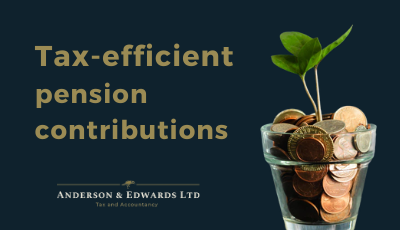
As a chartered tax advisor, I (James) am forever banging on about the tax advantages of pensions. There are not many investments that can compare with the mighty pension.
However, there is no getting away from it either. Pensions are complicated.
Why? Because there are rules on:
· What you can invest in
· How much you can invest
· How much you can invest per year
· How you put funds in
· How you take funds out
It is a minefield. Therefore it is no surprise that most people I speak to bury their heads in the pension sand. Most people just stick to the default amounts/percentages offered by employers. But this is a good place to start.
Let us talk about the pension contributions, as they are displayed on a payslip. There are different types of pensions, but we will be discussing Defined Contribution Pensions, also known as Money Purchase schemes.
Firstly, you need to know who is making the contribution:
· Employer; or
· Employee
Most payslips will separate this out for you, and you may have both contributing at the same time.
Employer contributions are rather straightforward. You do not pay income tax or National Insurance on these. Nor does the employer pay the employer's National Insurance Contribution (NIC) on these, so it is a popular way of paying a bonus or offering a pay increase.
Employee contributions
This is where it gets tricky.
An employee can contribute in three different ways:
· Salary sacrifice
· Net pay arrangement
· Relief at source
This involves taking a lower salary and replacing it with an employer contribution. By receiving a lower taxable income, you save on tax and employee NIC immediately. Your employer also saves 13.8% employer NIC. Some employers, if you are lucky, may even pass this saving back to the employee to increase the overall pension contribution.
This option also involves taking a lower salary, but the contribution is deemed to be made by the employee. You will receive the same tax relief as the salary sacrifice arrangement, but you will not get employee NIC savings. Your employer will not receive the employer’s NIC savings either.
This is rare to see on a payslip, but it does happen. With this option, you receive no tax relief nor NIC relief from your payslip. It is simply a deduction from your net pay.
You receive the tax relief via a two-stage process:
1) Your contribution is “grossed up” by the government. The easy way to understand it, is that if you see a £80 deduction, you will see £100 go into the pension via your pension statement. (25% increase).
2) You include the £100 “gross contribution” in a tax return and if you are a higher rate taxpayer you will reduce the amount of higher rate tax due.
If you do not have a document explaining exactly how your own pension works, how do you work out what method is being used?
The answer lies in the payslip itself. The rates of NIC and tax will indicate how the pension has been treated. I always ask for this as it lets me know whether I should include the contributions in the tax return or not.
The other option is to ask the person who runs your payroll!
Once you know how you are contributing, you can turn your attention to how much you should contribute. That is a harder question to answer, but getting your pension working tax efficiently is a prudent step.
There’s a reason we deal with pensions to help our clients get the best results. Email us at Enable JavaScript to view protected content. or call 0131 364 4191 if you want to talk about your pension in a tax-efficient way.
© 2024 Anderson & Edwards Ltd|Registered in Scotland SC678768|Privacy Policy|Website by Broxden